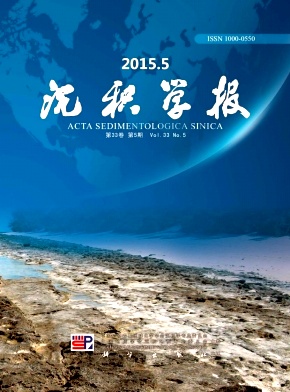Origin of Carbonate Cements in Reservoir Rocks and Its Petroleum Geologic Significance: Eboliang structure belt, northern margin of Qaidam Basin
doi: 10.14027/j.cnki.cjxb.2015.05.015
- Received Date: 2014-04-08
- Rev Recd Date: 2015-05-05
- Publish Date: 2015-10-10
-
Key words:
- northern edge of Qaidam Basin /
- Eboliang structure belt /
- carbonate cement /
- palaeo-fluid /
- petroleum geologic significance
Abstract: Carbonate cement is the product from activity of palaeo fluids, containing much profitable geological information on diagenetic environment and diagenetic fluid evolution. In this paper, integrating methods of petrology, mineralogy and geochemistry, the origin mechanism of carbonate cements are investigated in Eboliang structure belt, northern margin of Qaidam Basin. The result shows that the major carbonate cements are calcite and Fe-bearing calcite in the study area. The calcite cements are mainly discovered in Eboliang structure I, their carbon and oxygen isotope values have wide range (-13.47‰ <δ13CPDB <2.54‰,-15.93‰ <δ18OPDB <-4.74‰) and varied origin, such as organic matter decarboxylation, syngenetic or parasyngenetic, bacterial methanogenesis. However, The Fe-bearing calcite cements are maily discovered in Eboliang structure III and Yahu structure, the distribution of carbon and oxygen isotope values concentrates at -4.24‰ <δ 13CPDB <-1.99‰, -11.17‰ <δ18OPDB <-9.41‰, precipitated from sedimentary compacted water. The carbonate cements origin reveals the information on interaction between inorganic and organic fluid activity in Eboliang structure belt, which provides the important evidence for the hydrocarbon accumulation study in this area.
| Citation: | FU SuoTang, WANG ZhenLiang, ZHANG YongShu, WANG AiGuo, KONG HongXi, FAN ChangYu. Origin of Carbonate Cements in Reservoir Rocks and Its Petroleum Geologic Significance: Eboliang structure belt, northern margin of Qaidam Basin[J]. Acta Sedimentologica Sinica, 2015, 33(5): 991-999. doi: 10.14027/j.cnki.cjxb.2015.05.015 |






 DownLoad:
DownLoad: